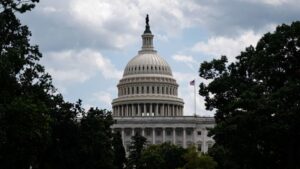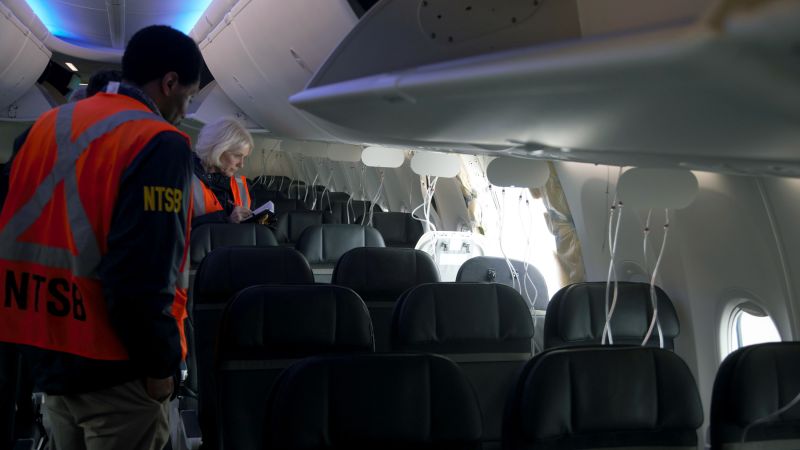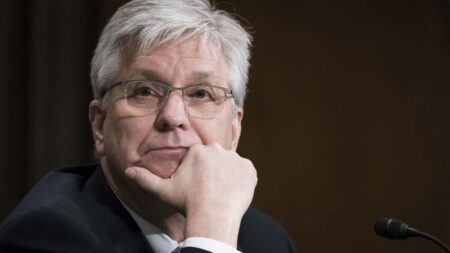The harrowing mid-flight incident on an Alaska Airlines flight that occurred last January, which involved a door plug blowout shortly after takeoff, has sparked a significant investigation into the roles of various parties involved in aviation safety. The incident prompted a hearing by the National Transportation Safety Board (NTSB), where chairwoman Jennifer Homendy articulated the necessity for accountability from the major stakeholders: Boeing, Spirit AeroSystems — the supplier of the aircraft’s fuselage — and the Federal Aviation Administration (FAA). Homendy made it abundantly clear that the safety deficiencies which culminated in the accident were apparent and that both Boeing and the FAA failed to act upon these evident risks.
At the outset of the hearing, Homendy articulated her astonishment regarding the FAA’s inaction. She stated, “The FAA is the absolute last barrier of defense when it comes to ensuring aviation safety,” illuminating the critical nature of regulatory oversight in aviation. The incident, which occurred minutes after the aircraft departed from Portland, Oregon, caused a sudden and alarming decompression at 16,000 feet. The strike of the door plug was so forceful that it swept away personal belongings, but, fortunately, it resulted in no casualties. The incident could have turned catastrophic, demonstrating the fragility of safety mechanisms in the aviation industry.
Early findings from the NTSB revealed that at least four essential bolts intended to secure the door plug were missing when the aircraft was first delivered to Alaska Airlines in October 2023. At the hearing, Homendy lauded the crew for their commendable efforts in managing the aircraft safely despite facing dire circumstances, but she firmly noted that such a situation should not have necessitated heroics. The idea was echoed that systemic failures had occurred, leading to the preventable accident.
During the hearing, the NTSB proposed nineteen safety recommendations — ten directed at the FAA and nine aimed at Boeing — most of which aligned with earlier recommendations outlined in an Office of Inspector General audit conducted in 2024. The response from the FAA was seemingly open and receptive. They stated they take NTSB recommendations seriously and indicated ongoing monitoring of Boeing’s performance in enforcing necessary changes to meet safety standards.
The NTSB’s inquiries also extended to shortcomings in the regulatory framework, criticizing the FAA for inadequate enforcement of compliance measures and oversight, thereby allowing such serious oversights in aviation safety. They specifically noted that the apparent removal and non-replacement of those bolts would have gone unnoticed until the next scheduled inspection — two years later — had the blowout not occurred. This oversight highlights a significant gap in both operational and regulatory practices within commercial aviation.
Homendy emphasized that the blame was not solely on Boeing or Spirit AeroSystems, recognizing broader systemic failings needed addressing. The absence of recorded information from the cockpit voice recorder (CVR) further complicated the investigation, underscoring the need for regulations mandating longer recording times, which were only recently implemented with the FAA Reauthorization Act of 2024.
Among the more alarming aspects of the NTSB hearing were the discussions around infant safety on aircraft; despite longstanding recommendations to require proper restraints for infants, this was still not mandated. Given the potential for injury, especially during sudden decompression, this represents a significant oversight in safety regulations.
Concerns about training protocols and process improvements were also prevalent during the hearing, with NTSB members stressing the necessity for both Boeing and the FAA to develop robust quality control and oversight measures. It was highlighted that the lack of clear guidance from the FAA often pushes the industry into a trial-and-error cycle, which should be addressed to prevent future incidents.
Homendy also acknowledged the changes made since the accident, including new leadership at Boeing and ongoing improvements in training and operational practices. However, she remains hopeful that with fresh leadership within the FAA and Department of Transportation, enhanced safety measures would be prioritized moving forward. Boeing’s spokesperson subsequently stated that they regret the incident and are focused on strengthening safety measures while reviewing the final report and recommendations made by the NTSB.
As Boeing navigates the storm of scrutiny following the Alaska Airlines incident, it remains intertwined in broader investigations, including a recent crash involving an Air India-operated 787 Dreamliner. The intertwining challenges threaten to further erode public confidence in Boeing’s ability to maintain safety standards, a notion borne from recent incidents involving the 737 Max.
In summary, the investigation into the Alaska Airlines incident serves as a critical reminder of the imperative need for rigorous safety standards in aviation and the responsiveness of regulatory bodies. Despite the ongoing efforts for reform and improvements within Boeing and the FAA, the path to achieving the highest standard in passenger safety remains fraught with challenges that must not be overlooked. The focus on accountability, training, and stringent oversight is paramount to instilling public trust in an industry that has faced significant setbacks over the past few years.











